Phylogenetic Trees
1/14
There's no tags or description
Looks like no tags are added yet.
Name | Mastery | Learn | Test | Matching | Spaced |
|---|
No study sessions yet.
15 Terms
what is phylogeny
the evolutionary history of a species or group of related species usually organized into a phylogenetic tree
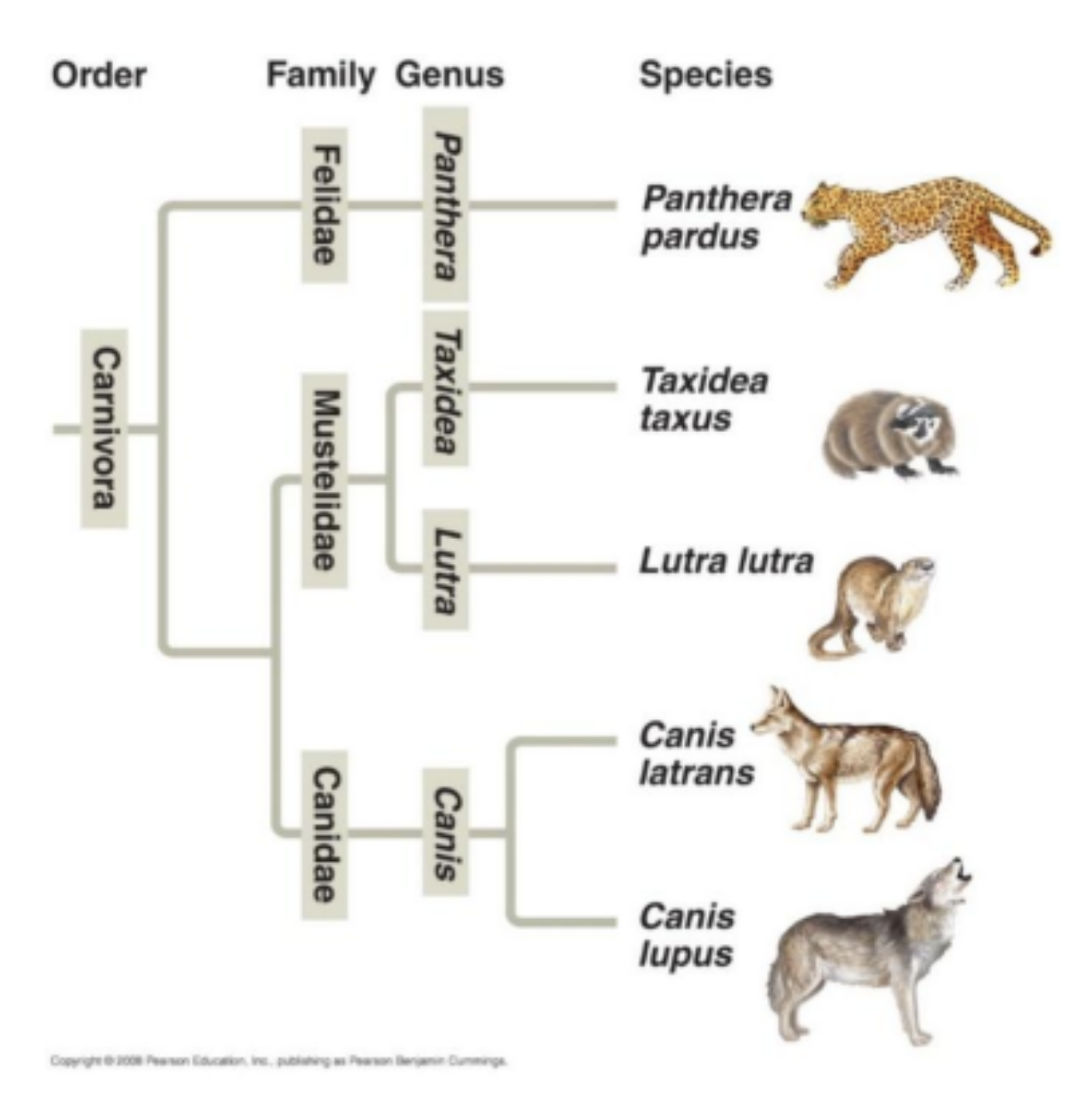
Phylogenetic trees and cladograms arrange organisms based on common and ____ _____
ancestry, shared characteristics
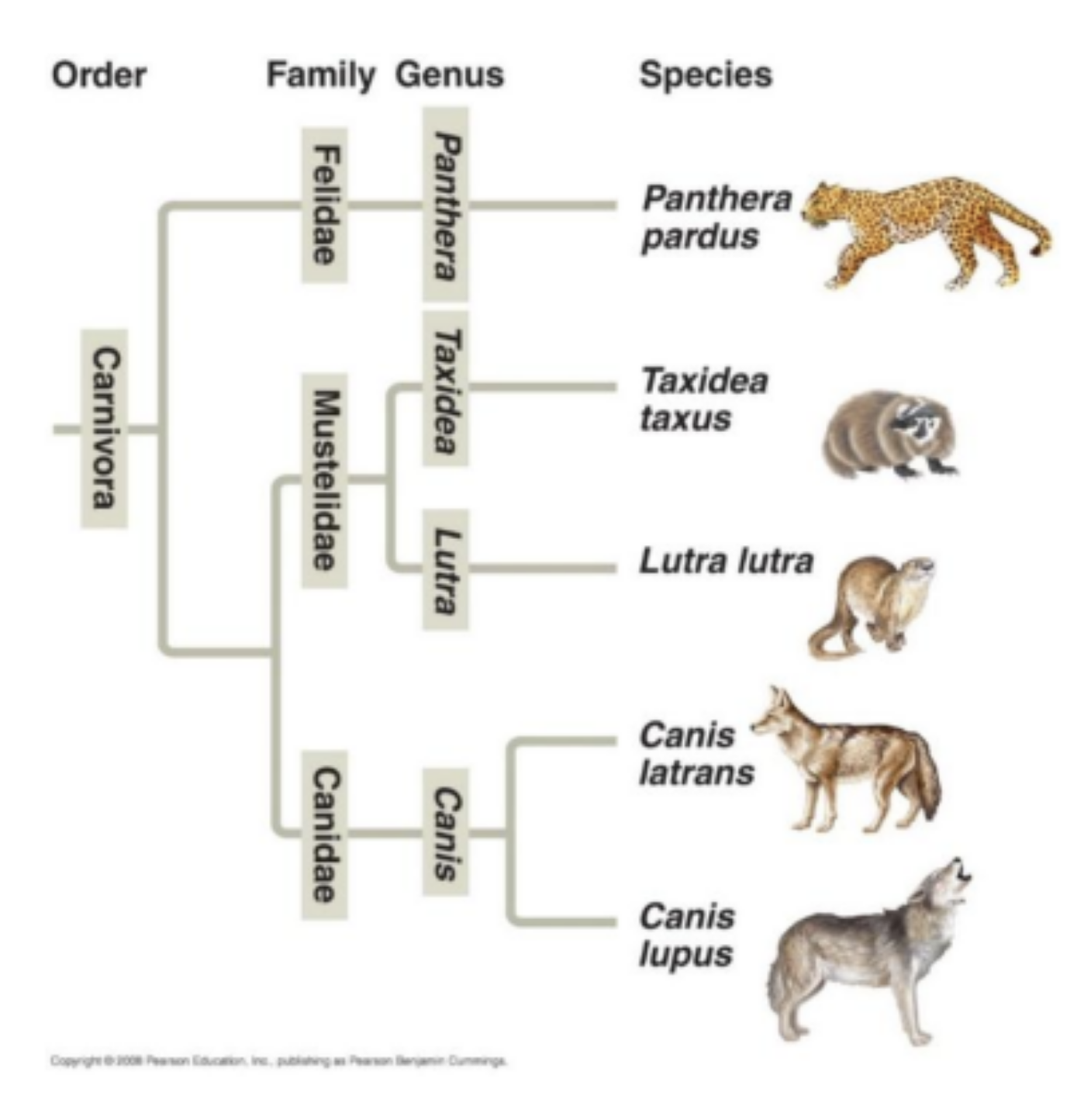
what are cladograms
hypothetical picture of the actual evolutionary history of the organisms
a diagram that shows evolutionary relationships
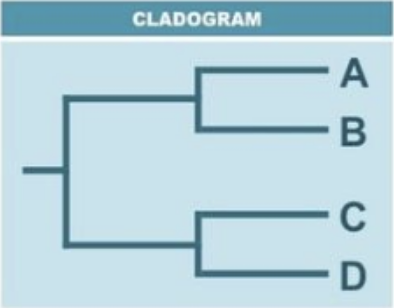
what are phylogenetic trees
more realistic representation of the evolutionary history of the organisms
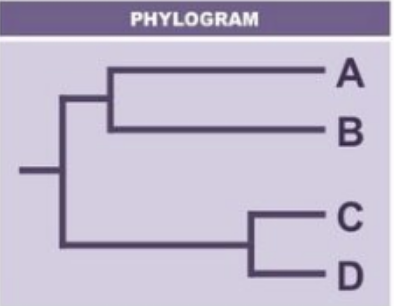
how can you distinguish the difference b/w phylogenetic tree and cladogram
difference seen in length of branching (related to time) and/or distance between taxon
parts of a phylogenetic tree
start of tree = root
node = common ancestors
taxon = “group” or name of species
two or more taxon = clade
basal taxon or outgroup = most related to the ancestral common ancestor or least related to the other taxon
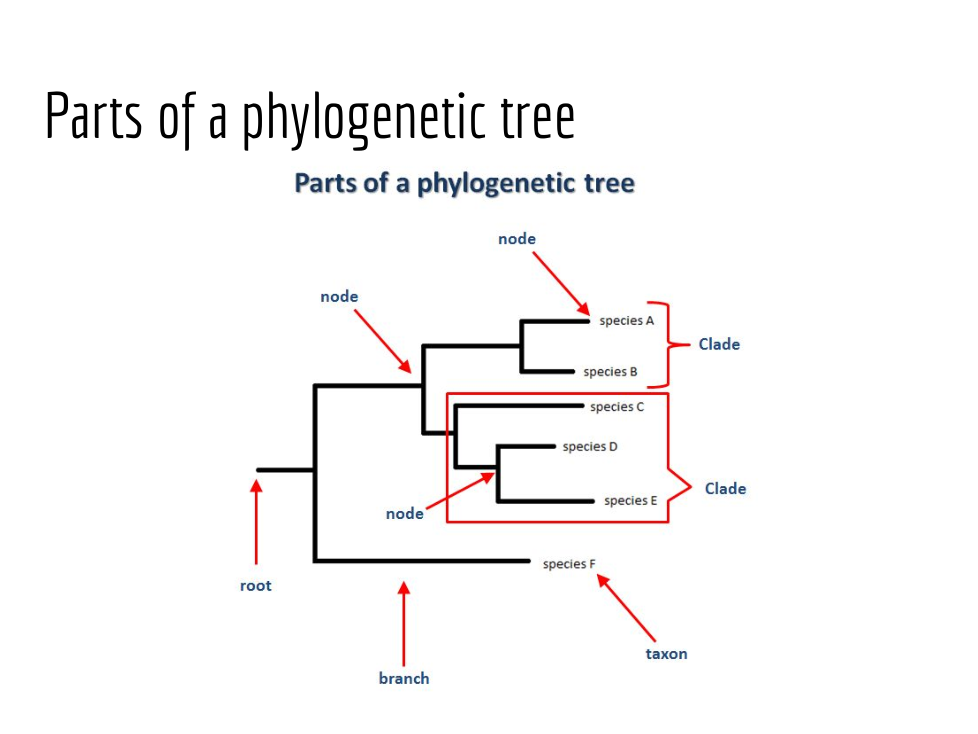
extinct vs extant
time
left to right
left (past)
right (present)
bottom to top
bottom (past)
top (present)
phylogenetic trees vs cladograms
taxon

what is a monophyletic taxon
one common ancestor and ALL of its descendants
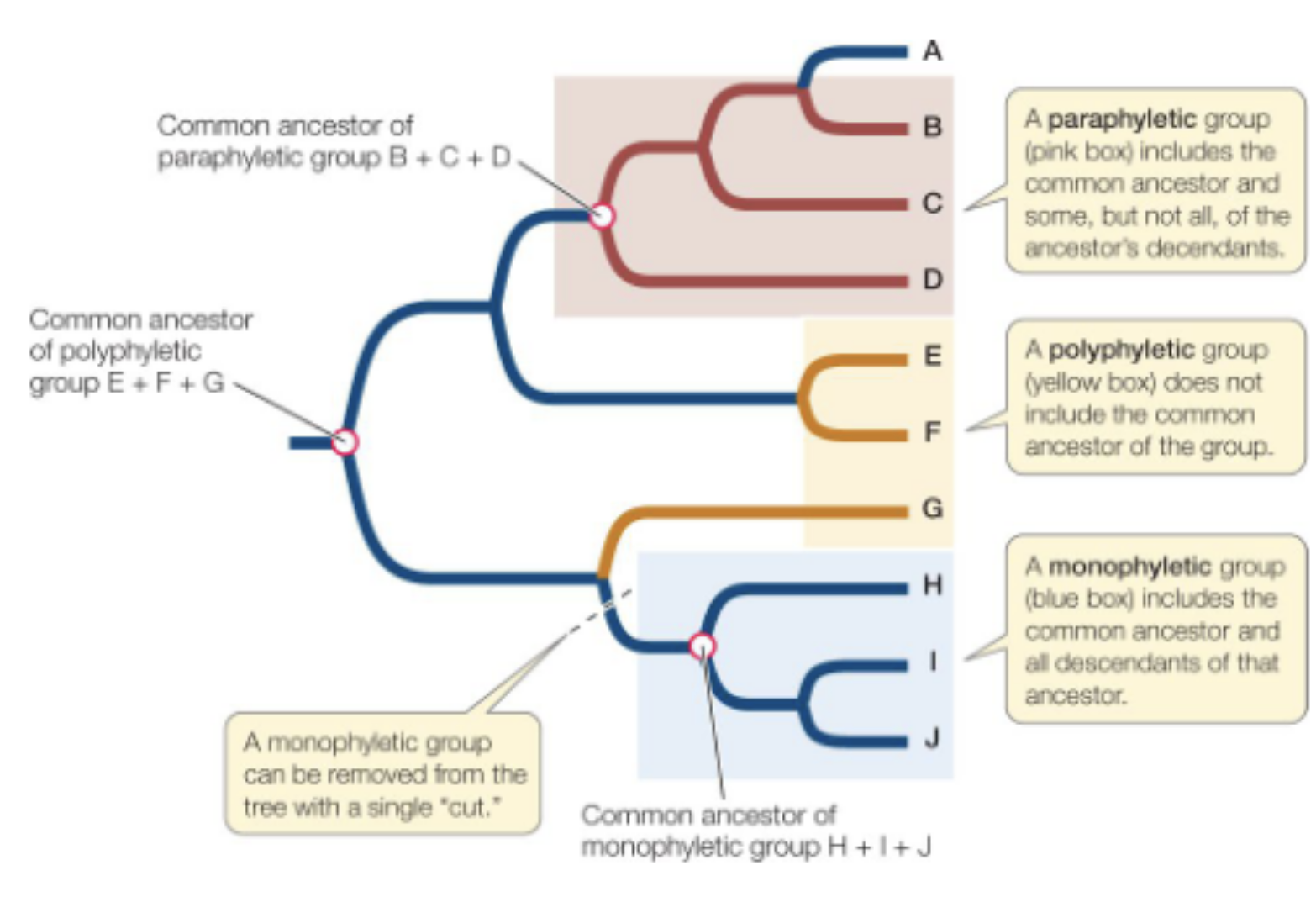
what is a polyphyletic taxon
group of organisms that LACK a common ancestor
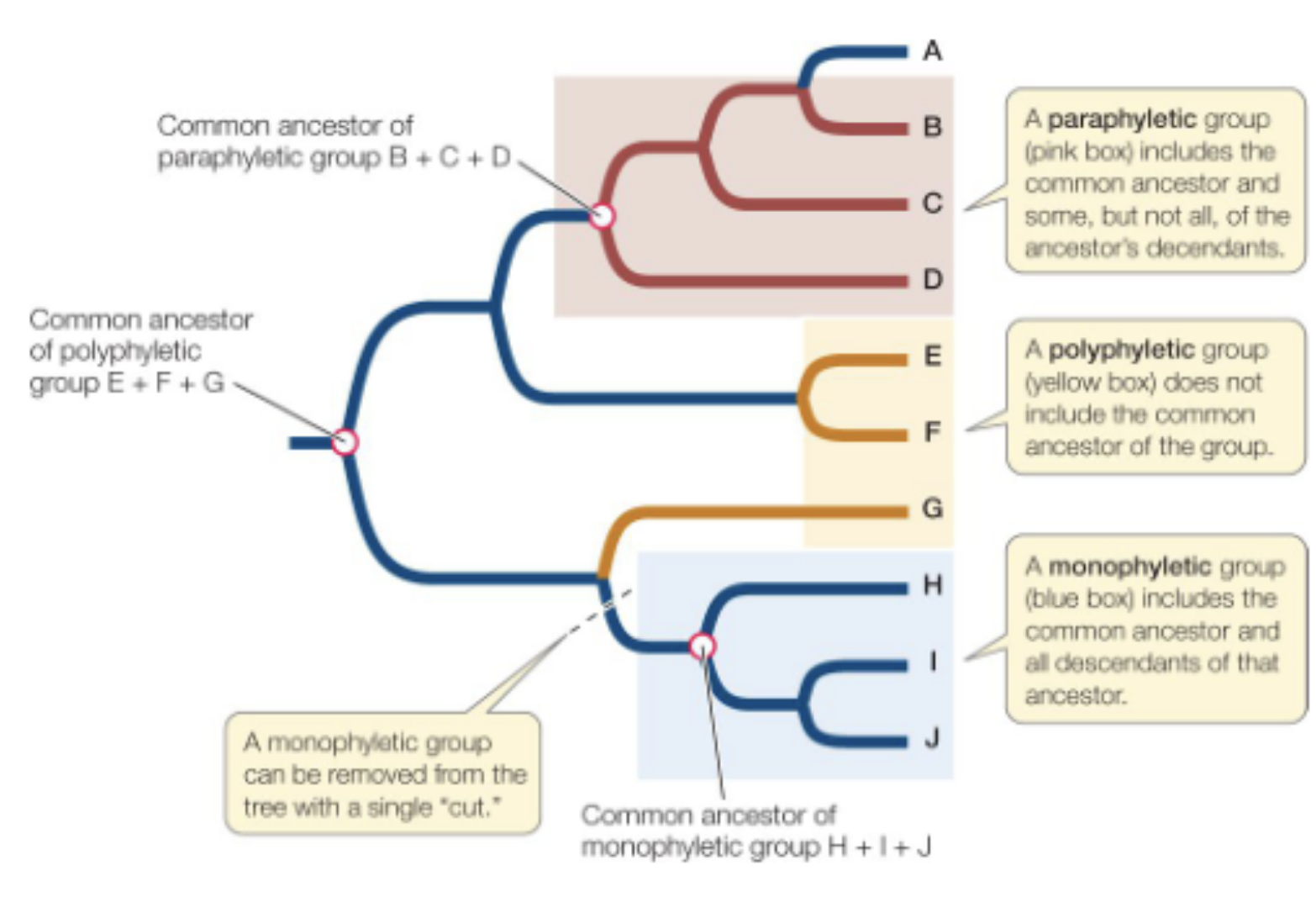
what is a paraphyletic taxon
one common ancestor and SOME of its descendants
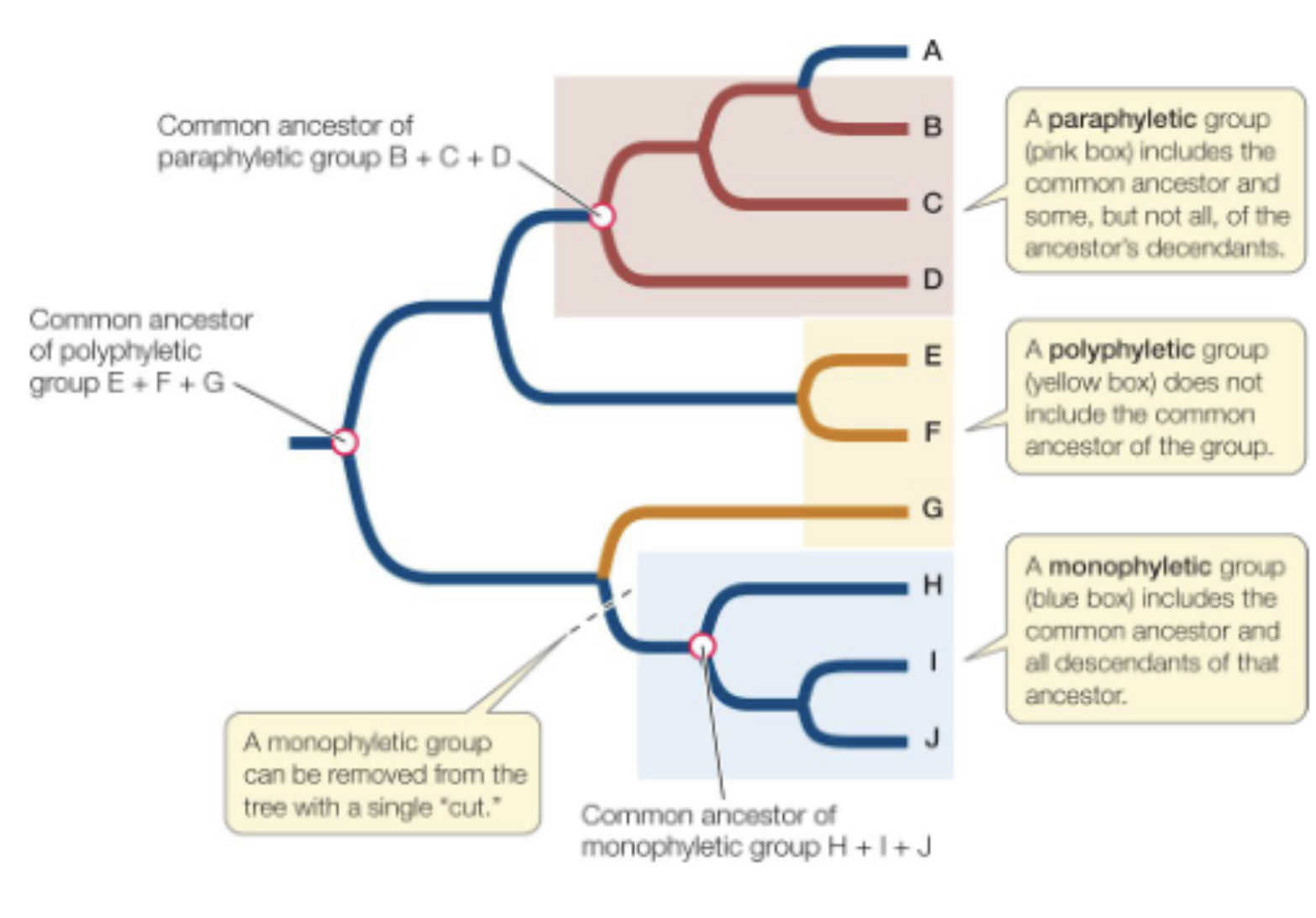
common ancestry
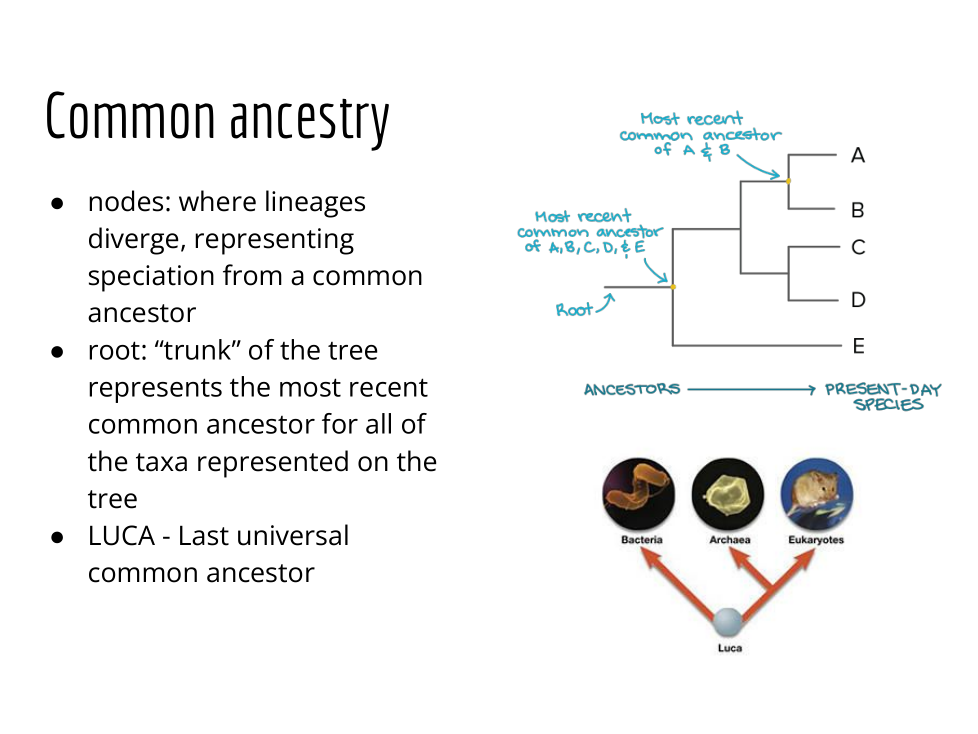
what is a clade (vocab. term)
a group of organisms believed to have evolved from a common ancestor
share similar characteristics

how to create a cladogram
create a table to compare derived characteristics
1 or + indicates possesses characteristic
0 or - indicates does not possess characteristic
based on similarities and differences arrange your organisms
what is a dichotomous key
a tool used to determine the identity of organisms
dichotomous - divided into two parts
